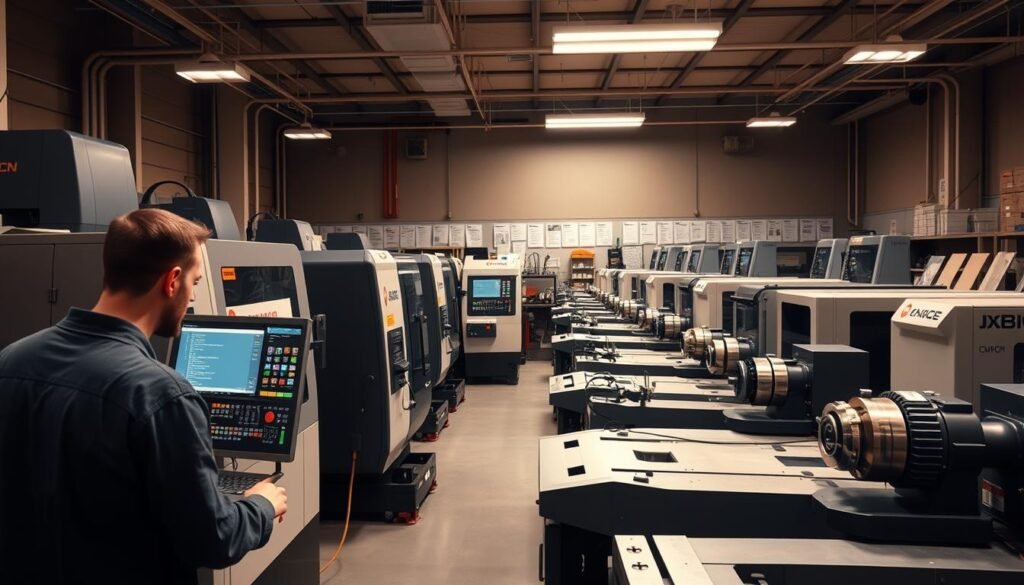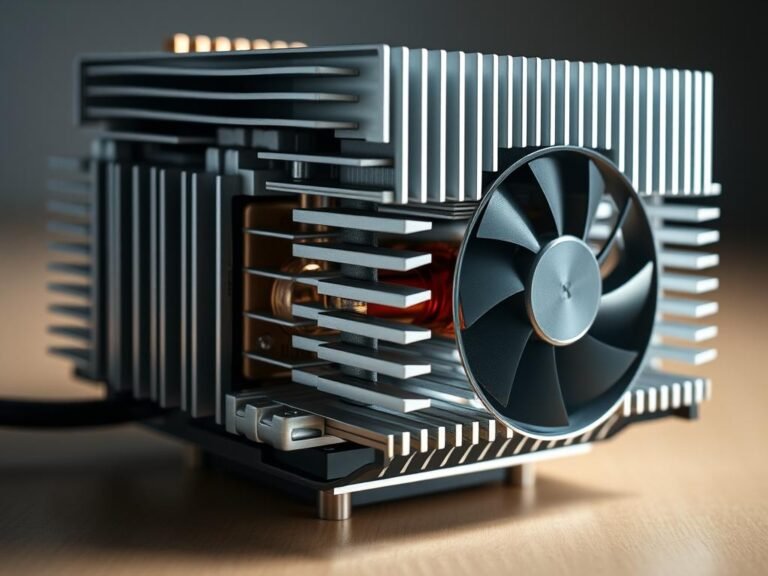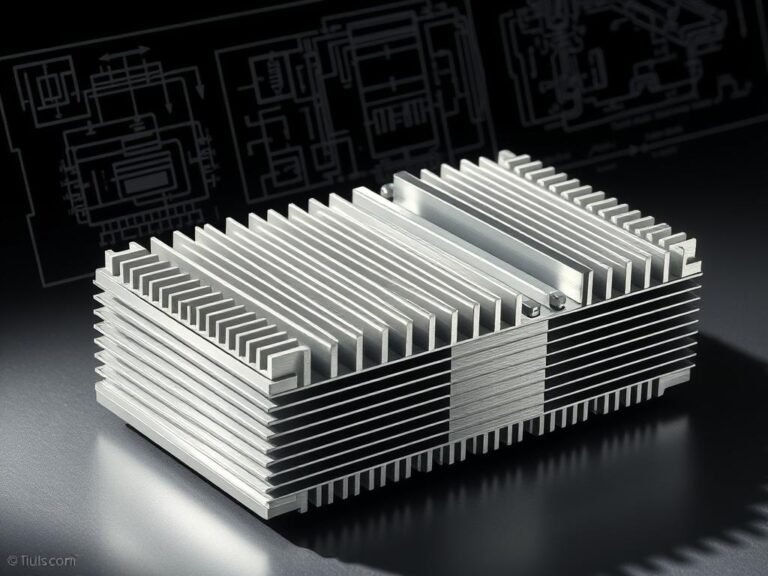CNC programming languages form the core of modern manufacturing technologies. They enable precise control of numerical machines through specific programming codes. The CNC control precisely defines the movements and functions of production equipment.
In industrial manufacturing, CNC programming languages play a crucial role. They translate complex technical designs into precise machine commands. Numerical control ensures the highest manufacturing accuracy and productivity.
Skilled workers must master various programming languages to efficiently control modern production equipment. Each language offers specific features for different machine types and manufacturing processes.
Kernel insights
- CNC programming languages control complex manufacturing machines
- Precision and efficiency are the main goals of programming
- Different languages for different machine types
- Digital control enables highly precise manufacturing processes
- Continuous training is important for professionals
Overview of CNC programming languages
CNC programming languages are essential tools in the modern manufacturing industry. They form the basis for machine control and enable precise movements and machining. The development of this machine language has undergone a fascinating technological evolution.
The world of CNC programming includes various approaches and systems:
- Standardized programming standards
- Manufacturer-specific machine languages
- Universal CNC code formats
Different machine types require specific programming languages. Industries such as mechanical engineering, automotive, and aerospace industry each uses adapted CNC code variants to ensure maximum precision.
The historical development of CNC programming languages shows a continuous adaptation to technological advances. From simple numerical controls, modern programming standards have evolved into highly complex systems capable of seamlessly controlling complex manufacturing processes.
Modern CNC programming languages are the backbone of industrial precision manufacturing.
Important aspects when choosing a programming language are compatibility, user-friendliness, and performance. Companies must carefully consider which machine language best suits their specific requirements.
G-Code as standard

G-Code is the standardized CNC language used worldwide in modern manufacturing industry. As an ISO code, it precisely defines movements and actions for CNC machines and enables uniform communication between different manufacturing systems.
The basic structure of the G-code is based on simple commands that control machine-specific operations. Each instruction typically consists of:
- A letter (G, M, X, Y, Z)
- Numerical values for position and movement
- Specific parameters for processing steps
Important features of the G-code include:
- Universal compatibility
- Precise control of machine axes
- Flexibility in different processing procedures
G-Code enables precise and standardized control of CNC machines in industrial manufacturing.
| G-code command | Function |
|---|---|
| G00 | Positioning at full speed |
| G01 | Linear interpolation |
| G02/G03 | Circle interpolation |
Despite slight variations between machine manufacturers, G-code remains the universal standard for CNC programming and provides developers worldwide with a common programming language.
M-code for machine functions
The M-code plays a crucial role in CNC programming and complements the G-code in controlling machine functions. Unlike the G-code, which primarily controls movements, the M-code focuses on additional machine commands that are not directly related to tool movement.
Important aspects of M-code programming include various critical control functions:
- Coolant control
- Tool change
- Program end
- Spindle control
- Werkzeugwechsler-Operationen
The variety of CNC functions through M-codes enables precise machine controls. Each M-command represents a specific action that is essential for smooth production processes.
| M-Code | Function | Description |
|---|---|---|
| M03 | Turn on spindle | Starts the spindle clockwise |
| M05 | Stop spindle | Stops the spindle rotation completely |
| M06 | Tool change | Automatically switches the tool in the magazine |
| M30 | Program end | Ends the CNC program and returns to the beginning of the program |
The interaction between G-Code and M-Code ensures comprehensive machine control. While G-Codes define movements, M-Codes complement them with specific machine commands, enabling precise and efficient manufacturing.
More CNC programming languages
In the world of CNC technology, there are various manufacturer-specific CNC languages that differ from standardized programming languages. These specialized languages were developed to meet the individual requirements of different machine manufacturers.

The diversity of CNC dialects requires professionals to have a deep understanding of different programming environments. Each manufacturer follows their own philosophy of machine control.
Heidenhain
Heidenhain developed its own programming language called Plain text, characterized by special user-friendliness. This language enables intuitive programming of CNC machines with clear, understandable commands.
- Simple syntax
- Graphical programming aids
- High user-friendliness
Fanuc
Fanuc relies on a standardized but complex programming language used in many industrial applications worldwide. The language requires precise knowledge and offers extensive control options.
Siemens
Siemens uses Sinumerik, a powerful control software that provides its own programming concepts and specialized languages for various industrial applications. The programming enables complex machining strategies.
Mastering multiple manufacturer-specific CNC languages is now a key to success for professionals.
Use of CAM software
CAM systems revolutionize modern manufacturing technology. These advanced software solutions play a crucial role in CNC programming by simplifying and optimizing complex manufacturing processes.
The main advantages of CAM systems include:
- Automatic conversion of 3D models into CNC code
- Significant reduction of programming errors
- Increased efficiency in manufacturing production
- Precise control of processing procedures
The PostprocessingStep plays a critical role in translating generic CAM outputs into machine-specific programming languages. Each CNC machine requires an individual post-processor that translates the universal CAM code into a specific machine language.
Modern CAM systems offer comprehensive solutions for various manufacturing technologies. They enable precise toolpaths, complex machining strategies, and seamless integration into existing production environments.
CAM systems are not just tools, but a strategic competitive advantage in modern manufacturing industry.
The implementation of CAM systems requires initial investments in software and training, but quickly pays off through increased productivity and quality.
Conclusion on CNC programming languages
The world of CNC programming is rapidly evolving in the context of Industry 4.0. Companies need to understand the variety of programming languages to stay competitive. G-code and M-code continue to form the foundation of modern manufacturing technology.
The future of CNC programming lies in automation and digital integration. Skilled workers need flexible knowledge of various programming languages such as Heidenhain, Fanuc, and Siemens to efficiently control complex manufacturing processes. Adaptability will become the key success factor in industrial production.
Technological innovations require continuous training. Companies are increasingly investing in training and digital learning platforms to prepare employees for the challenges of CNC programming. The fusion of software expertise and machine precision defines the future of industrial manufacturing.
Strategic competence development in CNC programming becomes the key to business success. Those who master the languages of the machines actively shape the digital transformation and secure an advantage in the global manufacturing landscape.


